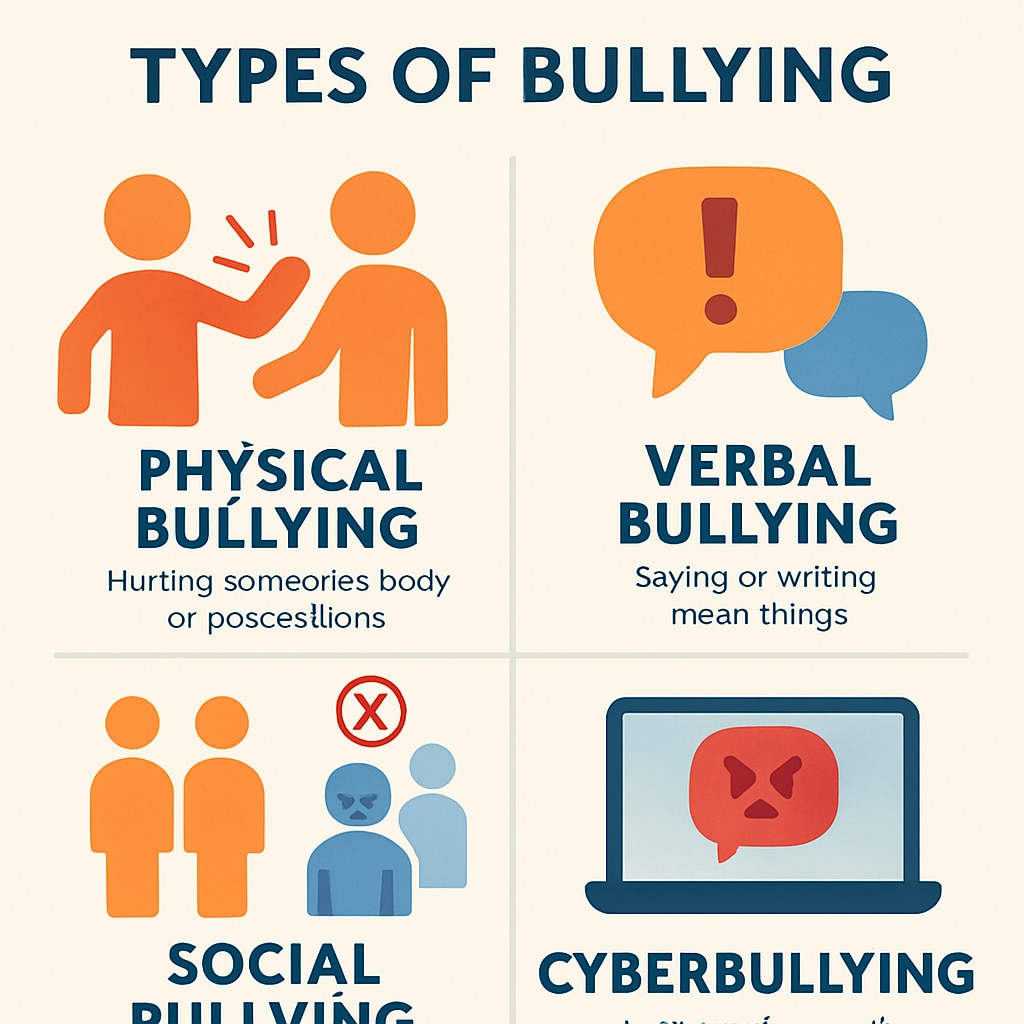Bullying remains a pressing issue in schools worldwide, requiring comprehensive solutions for effective management and prevention. Addressing “bullying, handling strategies, and behavior definitions” is critical to creating a safe learning environment. This article delves into practical approaches to build a bully-free campus, with strategies that emphasize prevention, intervention, and the cultivation of an inclusive school culture.
Understanding Bullying: Clear Definitions for Effective Action
Effective management of bullying begins with a precise understanding of its nature. According to the U.S. Department of Health and Human Services, bullying involves unwanted aggressive behavior, a power imbalance, and repeated actions over time. To combat the issue, schools must ensure that all stakeholders—teachers, students, and parents—share a consistent understanding of what constitutes bullying.
Key types of bullying include:
- Physical Bullying: Involves harm to a person’s body or belongings, such as hitting or vandalizing personal items.
- Verbal Bullying: Includes name-calling, insults, or other derogatory remarks.
- Social Bullying: Aims to damage someone’s reputation or relationships, such as through exclusion or spreading rumors.
- Cyberbullying: Takes place online, involving harmful messages or the sharing of private information.
Establishing clear definitions helps schools identify and address bullying behaviors effectively, ensuring that no incident goes unnoticed or unresolved.

Prevention First: Proactive Strategies to Curb Bullying
Preventing bullying requires schools to foster a culture of respect and empathy. Proactive strategies include:
- Anti-Bullying Policies: Develop and enforce clear policies that outline unacceptable behaviors and their consequences.
- Awareness Programs: Conduct workshops and campaigns to educate students and staff about the impact of bullying.
- Empathy Training: Incorporate activities that build emotional intelligence and encourage students to understand others’ perspectives.
- Parental Involvement: Engage parents through regular communication and workshops to create a unified approach to bullying prevention.
For example, initiatives such as peer mentorship programs can empower students to take an active role in preventing bullying, creating a supportive environment where everyone feels valued.

Intervention: Immediate and Compassionate Responses
Even with preventive measures, incidents of bullying may still occur. Schools must implement effective intervention strategies to address these situations promptly:
- Reporting Mechanisms: Create anonymous reporting channels for students to share concerns without fear of retribution.
- Investigation Protocols: Ensure fair and thorough investigations of reported incidents, involving all relevant parties.
- Restorative Practices: Use mediation and conflict resolution techniques to repair relationships and promote accountability.
- Support Systems: Provide counseling services for both victims and perpetrators to address underlying issues.
For instance, restorative justice practices can help students understand the harm caused by their actions, fostering a sense of responsibility and empathy while preventing future incidents.
Building an Inclusive School Culture
Ultimately, the most sustainable way to address bullying is by creating a culture that promotes inclusivity and mutual respect. Schools can achieve this by:
- Diversity Celebrations: Organize events that celebrate different cultures, backgrounds, and abilities.
- Student Leadership: Empower students to lead initiatives that promote kindness and respect.
- Positive Reinforcement: Recognize and reward positive behaviors to encourage a supportive school environment.
An inclusive culture not only reduces the likelihood of bullying but also enhances students’ overall well-being and academic performance. As a result, schools can become places where every student feels safe, respected, and valued.
By combining clear behavior definitions, proactive prevention, effective intervention, and a commitment to inclusivity, schools can take meaningful steps toward eliminating bullying. A bully-free campus is not merely an ideal but a necessary foundation for nurturing the leaders of tomorrow.
Readability guidance: This article uses short paragraphs and lists to ensure clarity. Transition words such as “however,” “therefore,” and “for example” are included to maintain logical flow. The passive voice is minimized for a more engaging and actionable tone.


